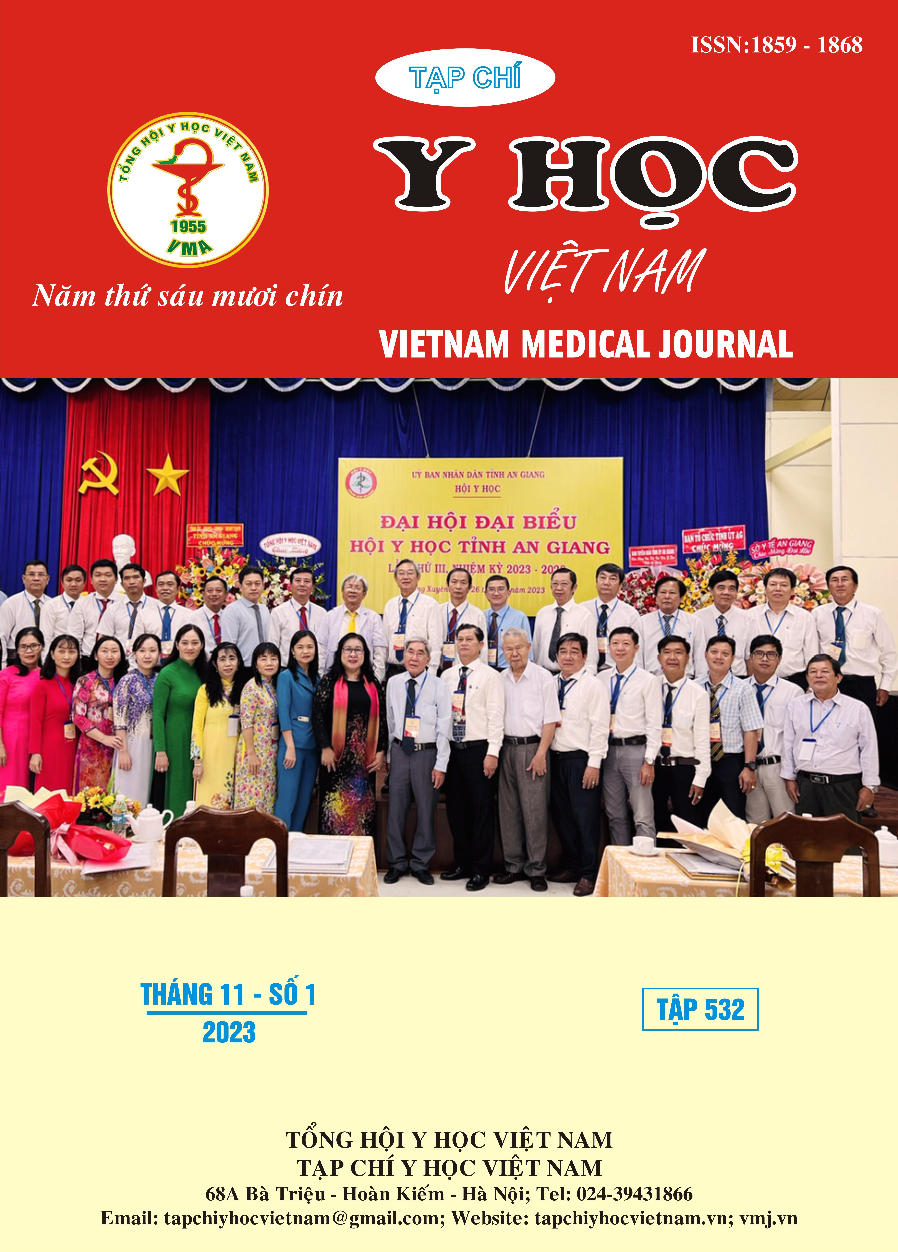TỈ LỆ NGUY CƠ VÀ MỘT SỐ YẾU TỐ LIÊN QUAN CỦA HIỆN TƯỢNG MẤT TIẾP XÚC BÊN GIỮA PHỤC HÌNH TRÊN IMPLANT NHA KHOA VÀ RĂNG KẾ CẬN
Nội dung chính của bài viết
Tóm tắt
Mục tiêu: Khảo sát tỉ lệ, một số đặc điểm lâm sàng, cận lâm sàng của hiện tượng mất tiếp xúc bên giữa phục hình trên Implant nha khoa và răng thật kế cận, từ đó đánh giá mối tương quan giữa tình trạng mất tiếp xúc bên với một số yếu tố liên quan. Đối tượng và phương pháp nghiên cứu: nghiên cứu mô tả thực hiện trên 126 phục hình đơn lẻ trên implant. Mỗi phục hình được ghi nhận tình trạng hở tiếp xúc ở mặt bên (vị trí gần/ xa, kích thước khoảng hở) và các yếu tố liên quan (vị trí của phục hình, thời gian hoạt động chức năng của phục hình, vật liệu chế tạo). Đối tượng được phỏng vấn về tình trạng nhồi nhét thức ăn tại diện tiếp xúc, đồng thời được chụp phim X-quang cận chóp để đánh giá sự tiêu xương ở mặt bên Implant tương ứng với diện tiếp xúc. Kết quả: Có 23,1% vị trí xảy ra hiện tượng mất tiếp xúc, trong đó tỉ lệ mất tiếp xúc ở phía gần cao hơn ở phía xa (p=0,000, 95%CI), có mối tương qua giữa tỉ lệ mất tiếp xúc bên và thời gian hoạt động chức năng của phục hình và tình trạng nhồi nhét thức ăn ở mặt bên răng. Không thấy có sự khác biệt về tỉ lệ mất tiếp xúc bên đối với phục hình ở hàm trên so với hàm dưới (p=0,456, 95%CI), không có sự khác biệt ở các vùng răng (răng cửa/ răng nanh, răng hàm nhỏ/ răng hàm lớn). Ngoài ra các yếu tố về giới tính và độ tuổi cũng chưa cho thấy mối tương quan với hiện tượng mất tiếp xúc bên. Kết luận: Mất tiếp xúc bên là một biến chứng phổ biến của phục hình trên implant nha khoa, với nhiều yếu tố nguy cơ, tuy nhiên lại thường bị bỏ qua.
Chi tiết bài viết
Tài liệu tham khảo
2. Yen JY, Kang L, Chou IC, Lai YL, Lee SY. Risk assessment of interproximal contact loss between implant-supported fixed prostheses and adjacent teeth: A retrospective radiographic study. J Prosthet Dent. Jan 2022;127(1):86-92.
3. French D, Grandin HM, Ofec R. Retrospective cohort study of 4,591 dental implants: Analysis of risk indicators for bone loss and prevalence of peri-implant mucositis and peri-implantitis. J Periodontol. Jul 2019;90(7):691-700.
4. Bompolaki D, Edmondson SA, Katancik JA. Interproximal contact loss between implant-supported restorations and adjacent natural teeth: A retrospective cross-sectional study of 83 restorations with an up to 10-year follow-up. J Prosthet Dent. Mar 2022;127(3):418-424.
5. Ren S, Lin Y, Hu X, Wang Y. Changes in proximal contact tightness between fixed implant prostheses and adjacent teeth: A 1-year prospective study. J Prosthet Dent. Apr 2016;115(4):437-40.
6. Varthis S, Randi A, Tarnow DP. Prevalence of Interproximal Open Contacts Between Single-Implant Restorations and Adjacent Teeth. Int J Oral Maxillofac Implants. Sep-Oct 2016;31(5):1089-92.
7. Byun SJ, Heo SM, Ahn SG, Chang M. Analysis of proximal contact loss between implant-supported fixed dental prostheses and adjacent teeth in relation to influential factors and effects. A cross-sectional study. Clin Oral Implants Res. Jun 2015;26(6):709-14.
8. Southard TE, Behrents RG, Tolley EA. The anterior component of occlusal force. Part 2. Relationship with dental malalignment. Am J Orthod Dentofacial Orthop. Jan 1990;97(1):41-4.


